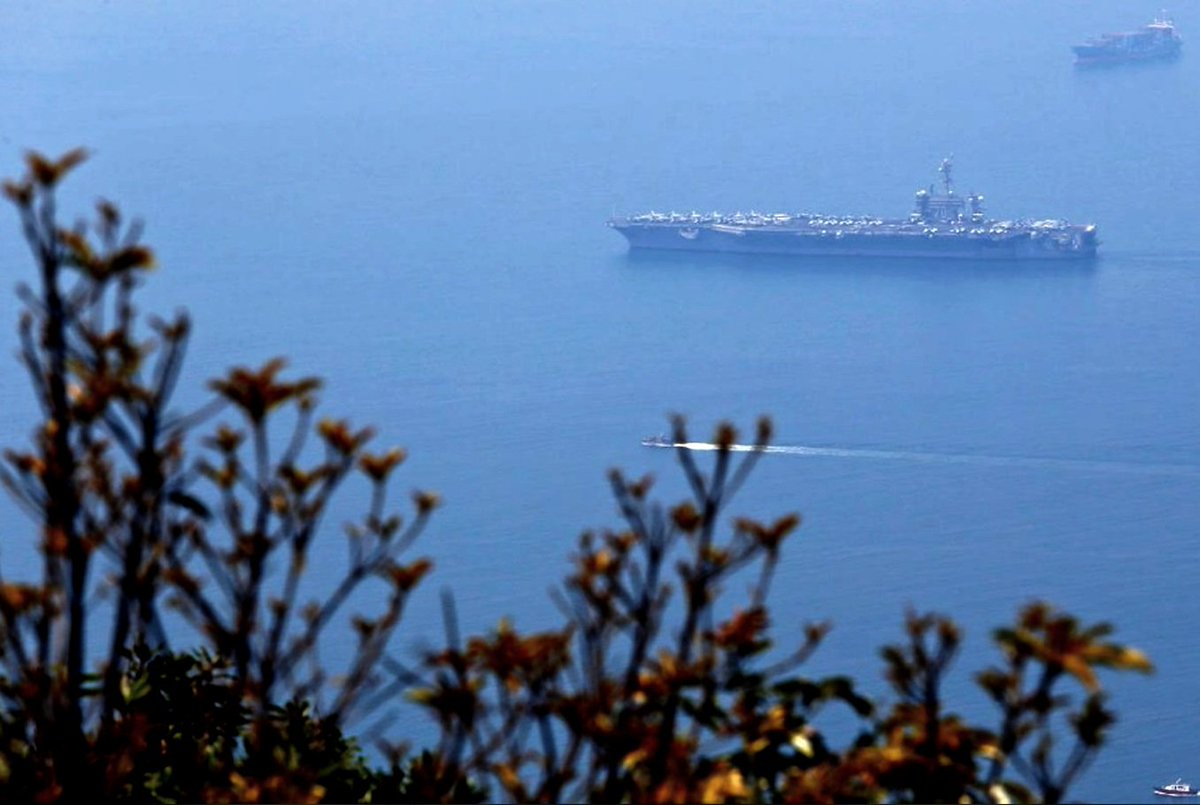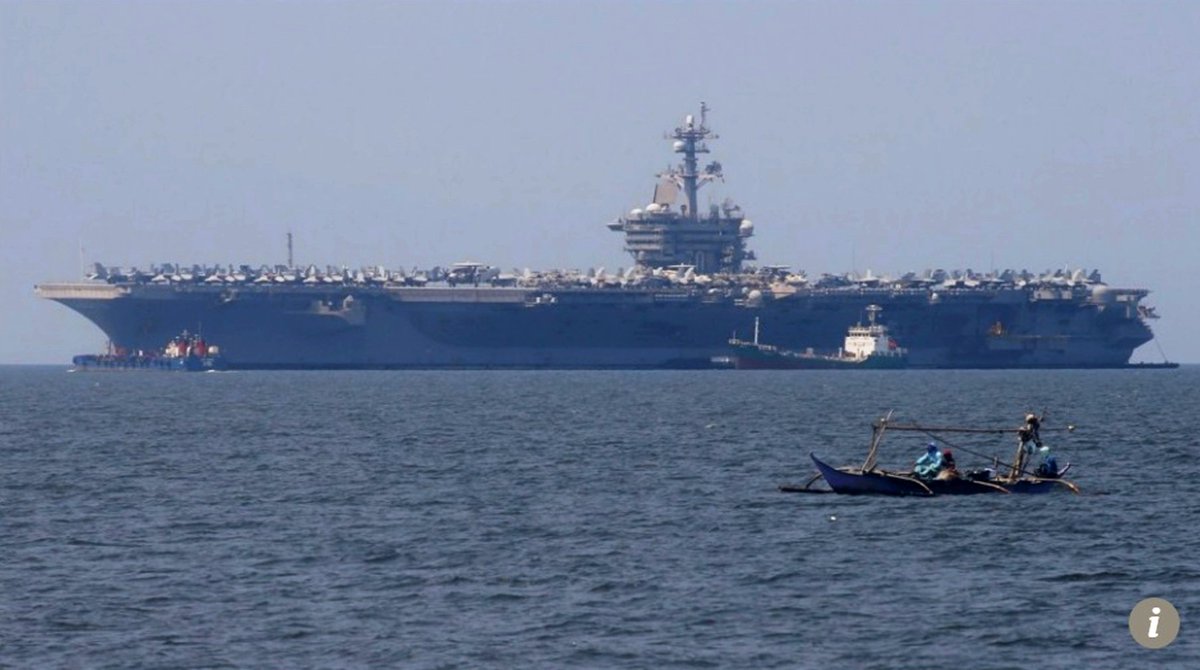On the tarmac of St. Louis’ historic Lambert Field, the future of aircraft carrier aviation may be taking shape. Phantom Works,
’s shadowy advanced prototyping group, has painted part of the tarmac to resemble the flight deck of a carrier. Over the past few months, the company been using this space at all hours of the day and night to test its latest military UAV: a prototype for the U.S. Navy’s MQ-25 “Stingray” program.
A video viewed by Aviation Week and labeled “competition sensitive” shows the huge drone taxiing around the runway during daylight hours on its own power. It stops, starts, moves forward and hooks into position behind the catapult, prepared for launch. But the long-wing aircraft has not yet flown; it is instead being used for carrier suitability trials, including a series of maneuvers to ensure the UAV can easily, reliably and safely move around the deck like any manned aviation platform.
Exactly how the aircraft is directed around the deck is a company secret. We have agreed not to write about it, but one can guess that it will not involve traditional hand signals or wands. As part of the carrier suitability tests, Phantom Works also has been validating the UAV’s “spot factor” and ensuring that it can park anywhere a Boeing
Super Hornet can, including the tightest spot of all, a slither of deck aft of elevator No. 4 called “the finger.”
Although originally conceived for the Navy’s Unmanned Carrier-Launched Airborne Surveillance and Strike (Uclass) program, Boeing’s aircraft is now being promoted as the perfect fit for aerial refueling missions at sea. While other Uclass contenders such as
had been pressing for the development of stealthy intelligence, surveillance and reconnaissance (ISR) aircraft that can find and destroy targets, Boeing saw greater potential for a UAV that conducts tanking, while retaining residual capability for surveillance and strike, if needed. What resulted was the “T-1,” as the company’s lead aircraft for the MQ-25 is designated.
Long before Uclass, the Navy had wanted to develop a carrier-based UAV for tanking duties, rather than continuing to chew through the precious service life of manned, refueling-capable strike aircraft. The program restructuring in 2015 that gave rise to the MQ-25 Carrier-Based Aerial-Refueling System (CBARS) was good news for companies such as Boeing, which were not as invested in surveillance and strike compared to Northrop, which bowed out of the competition in October 2017, leaving the X-47B UAV demonstrator high and dry.
In an exclusive interview with Aviation Week, Boeing Phantom Works MQ-25 program director Don “BD” Gaddis revealed that the T-1 prototype now being tested at Boeing’s military aircraft plant in St. Louis was actually rolled out in November 2014 but was kept hidden from public view until now. The strange-looking creature first broke cover in December 2017, when Boeing released an obscure, front-on image via Twitter. Having started outdoor trials, the company knew it was only a matter of time before images started leaking online.
Sure enough, in early January,
The War Zone published eight fuzzy images taken by Jeremy McGough as he was flying out of St. Louis Lambert International Airport. Those are the only public images so far that show the aircraft in its entirety, including the full span of its gliderlike wings.
“Lambert actually helped us by allowing us to use part of the airport concrete, which we painted up as a flight deck. They even let us use an unmanned drone to take video with,” Gaddis says. “When doing the demonstration, we tried to be as close as possible to a carrier flight deck as we could.”
With Northrop’s withdrawal, Boeing is now one of three prime contractors in the Navy’s multibillion-dollar MQ-25 competition, going up against alternative proposals from
(GA-ASI) and
Skunk Works. The three companies each responded to Naval Air Systems Command’s Oct. 4, 2017, MQ-25 request for proposals by the Jan. 3 deadline and are now awaiting a source-selection decision expected in early August.
“We’ve put together a good proposal against the requirements,” Gaddis says. “My boss [Leanne Caret, the head of Boeing Defense, Space & Security] sees MQ-25 as a franchise program for the company, and she wants to win it, as does my CEO [Dennis Muilenburg]. We are going to go out and win this thing.”
Boeing is so determined to win this program, it has backed two sides. Boeing Autonomous Systems, a newly created business unit responsible for most of the company’s unmanned programs, is aligned with GA-ASI for the competition and has been internally “firewalled” from the Phantom Works program. “I don’t know anything about what they’re doing because of the firewall,” Gaddis says of the dual teaming arrangement.
The clean-sheet T-1 aircraft dates to October 2012, when Boeing completed the initial design review. It was quietly rolled out two years later and is now supporting Boeing’s concept refinement and deck-handling demonstration work for the Navy, while also building up to first flight. Gaddis will not say exactly when the aircraft is due to fly, but it will likely happen sometime after the contract award in August.
The aircraft looks nothing like Boeing’s earlier Phantom Ray flying-wing design, which first flew in April 2011 and had been a candidate for the Uclass surveillance-and-strike role. What the company has come up with is a stretched-out wing-body-tail aircraft with a V-tail ruddervator and fold-up, high-aspect-ratio wings. When the first images were released, there was some misguided speculation about the purpose of the forward air intake and the nose camera. But Boeing confirms that the forward inlet simply supplies air to the environmental control system and the camera is being used to collect data during testing and does not feature in the actual MQ-25 design. The final versions will, however, carry an electro-optical sensor.
...






